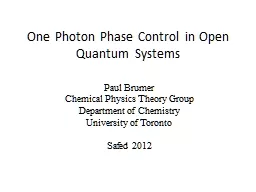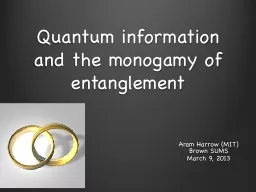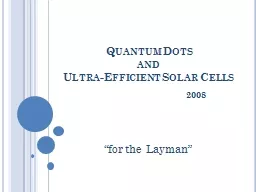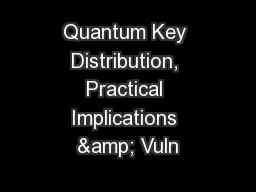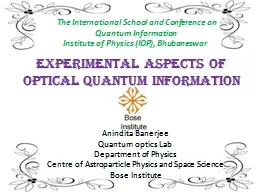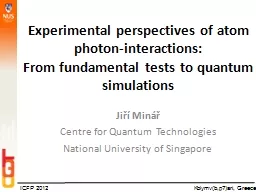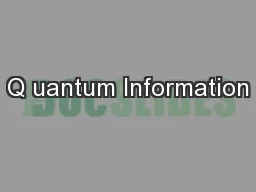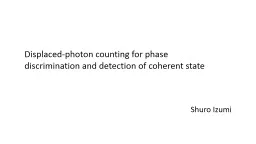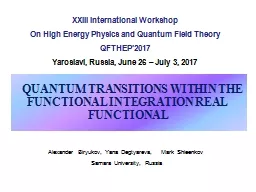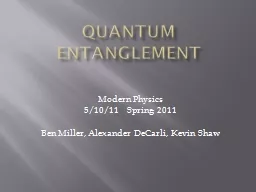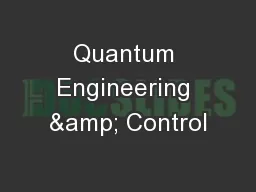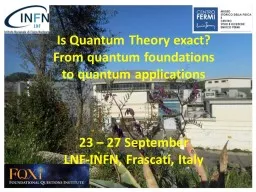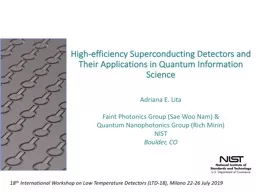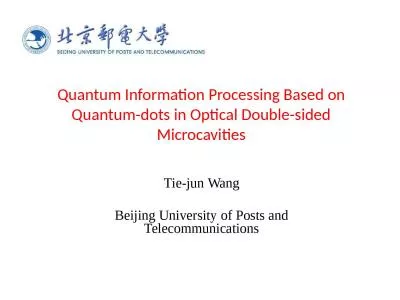PPT-One Photon Phase Control in Open Quantum Systems
Author : lois-ondreau | Published Date : 2019-06-24
Paul Brumer Chemical Physics Theory Group Department of Chemistry University of Toronto Safed 2012 Issue In the weak field regime one photon Can one control the
Presentation Embed Code
Download Presentation
Download Presentation The PPT/PDF document "One Photon Phase Control in Open Quantum..." is the property of its rightful owner. Permission is granted to download and print the materials on this website for personal, non-commercial use only, and to display it on your personal computer provided you do not modify the materials and that you retain all copyright notices contained in the materials. By downloading content from our website, you accept the terms of this agreement.
One Photon Phase Control in Open Quantum Systems: Transcript
Download Rules Of Document
"One Photon Phase Control in Open Quantum Systems"The content belongs to its owner. You may download and print it for personal use, without modification, and keep all copyright notices. By downloading, you agree to these terms.
Related Documents

